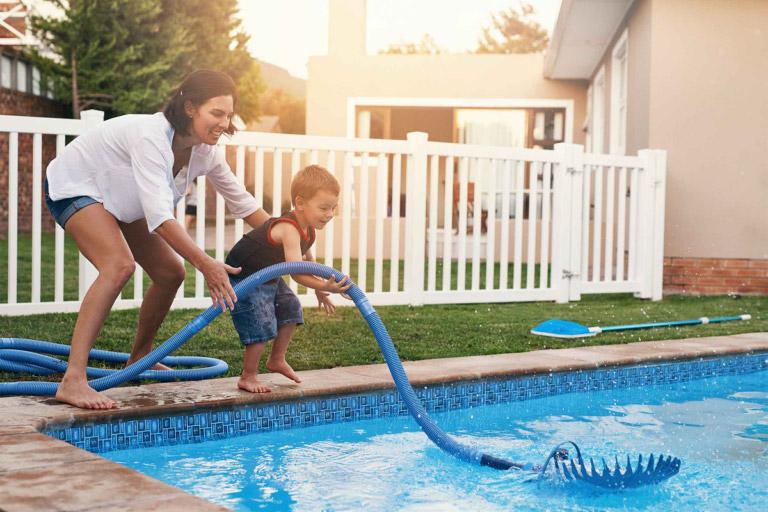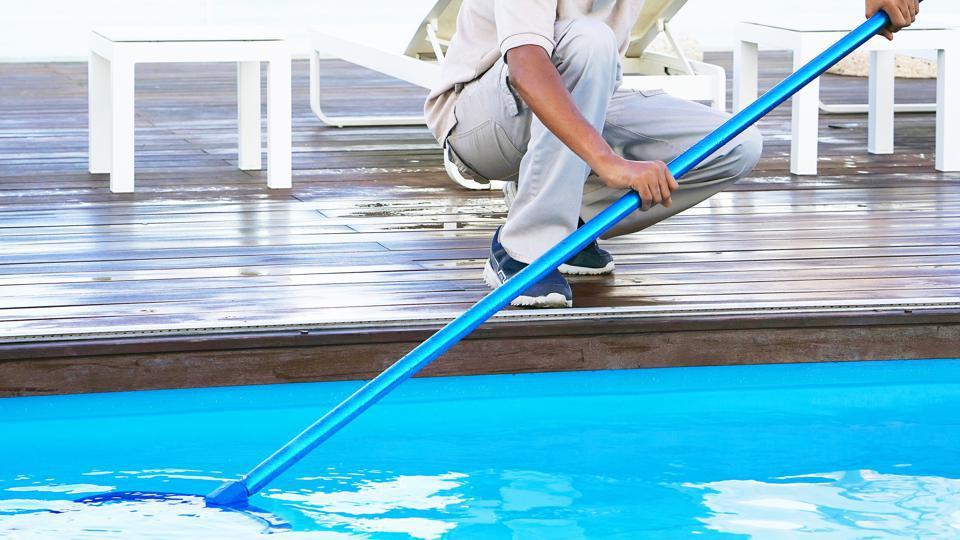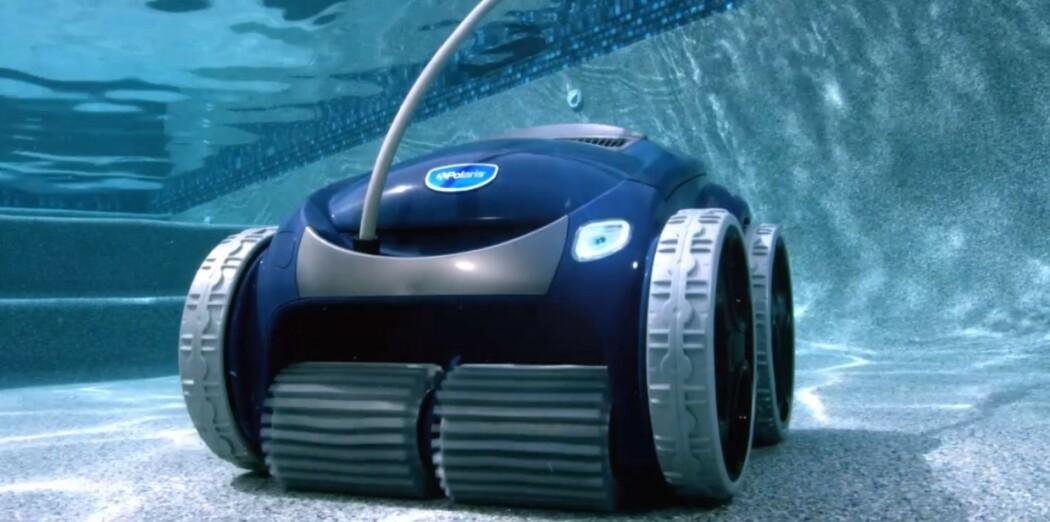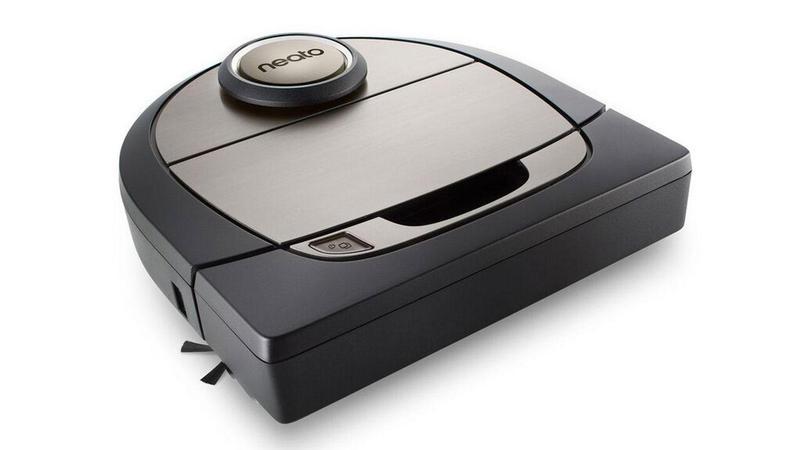Ask The Contractor: 6 Things You Didn’t Know About Pool Maintenance
It’s hot outside. Wouldn’t it be lovely to take a dip in your very own backyard pool? As popular as private swimming pools are, there is a lot of information and misinformation about what pool ownership really involves, including maintenance must-do’s, finding the right pool installation company and more. Here’s a primer on what to expect when you own a swimming pool. And yes, a swim would be lovely right about now.
Q: From your experience, how much does it cost to hire someone to maintain a pool?
A: Of course, it varies widely geographically. With a weekly or monthly contract, an average of $1,500 to $2,000 annually can be expected in areas that require shut-down and start-up service for winter storage. Hiring on a one-time basis for maintenance will cost significantly more.
Q: What types of maintenance are needed for a pool?
A: All pool chores can be described as either cleaning or monitoring tasks. Daily removal of debris from intakes should be followed up by weekly cleaning and vacuuming. Remember to brush the walls above the waterline. Filter backwashing or cleaning should be performed at least twice per summer, on average, but it should be done more often if the pool is used very frequently or all year round.
Keeping an eye on water levels should be done on a constant basis. High water can disrupt the chemical balance. Low water can do the same and also cause equipment damage. Chemical levels need to be checked and maintained at least twice a month.
Q: Which types of maintenance most often go ignored?
A: Unfortunately, the easiest thing to do is also the most ignored. Simply removing large debris from skimmers is quick and easy. Doing it daily can have a huge impact on the overall water quality, chemistry and pump repair costs. The hard part is doing it daily.

Cleaning the pool can be time-consuming and easy to put off until next weekend. That decision, made too often, can be a costly mistake. Purchasing a semi-autonomous pool vacuum (robot) can be a big timesaver.
Q: Which type of pool will yield the highest resale value?
A: The easy answer is: An inground pool has a higher resale value than an above-ground one. However, there are many factors to take into consideration. Overall, a pool adds a small monetary value compared to the cost of installing one. Current estimates are around an 8% increase. However, the market value can increase dramatically if you’re in the right neighborhood.
Regarding saltwater versus chlorine pools, there isn’t a big difference. They each have their own pros and cons.
Safety concerns, maintenance requirements, the general housing market and more, all have an effect on resale. A trusted realtor can provide you with current market information. I’m not a finance expert by any means, but there are better ways to increase the selling price of a home than by installing a pool.
Q: Are there other alternatives to using chlorine?
A: A common misperception is that saltwater pools are not chlorinated pools. The truth is that saltwater pools generate their own chlorine from the salt itself, rather than simply putting in chlorine. In conventional pools, saltwater or not, chlorine is necessary to keep them safe for swimming.
However, natural swimming pools that use complex filtration instead of chemicals to remain safe, are rapidly gaining popularity. They’re environmentally friendly and require minimal maintenance. The current high costs for installation, and potentially expensive repairs, are still keeping would-be consumers away, but that’s expected to change as word spreads.
Q: We heard pool pumps can be real energy-suckers. Is that true, and if so, what do you recommend for people who want to keep an energy-efficient pool?
A: You heard correctly. A single-speed, one horsepower pool pump can use up to 1,500 watts of electricity. Compared to an average-sized window air conditioner that uses around 900 watts of power, pool pumps use up quite a few kilowatts.
There are a few things you can do to increase efficiency. The easiest is to simply be diligent in keeping the intakes clear of debris. This keeps pump pressure to a minimum and can reduce energy costs.
The go-to method for saving energy is by decreasing the daily run time of the pump. However, it can only be reduced so much before other problems creep in as a result. A bare minimum of one full water turnover per day is necessary. Installing an on/off timer will remove human error from the equation.
Running your pump during daylight hours, when sunlight is affecting chlorine levels, will keep concentrations equal throughout the pool. The pump can run for shorter periods without upsetting the chemical balance.
Finally, replacing an old, single-speed pump with an Energy Star rated, variable speed pump is your best option for energy savings. They can be quite pricey upfront, but the cash saved on energy costs will quickly cover the investment.
Deane is a 30+ year veteran in the contracting, remodeling, maintenance, and home repair industry. His experience ranges from licensed building contracting to property maintenance company ownership. Currently operating a home repair and DIY consulting service, he empowers his clients to be self-sufficient in their home repair and remodeling endeavors.
Compare Quotes From Top-rated Pool Contractors
Free, No-commitment Estimates
Find a ContractorYour Home. Your Decisions. Our Support. Get expert advice on your home, design tips, how much to pay for pros and hiring experts, delivered to you daily.Thanks & Welcome to the Forbes Advisor Community!I agree to receive the Forbes Home newsletter via e-mail. Please see our Privacy Policy for more information and details on how to opt out.


